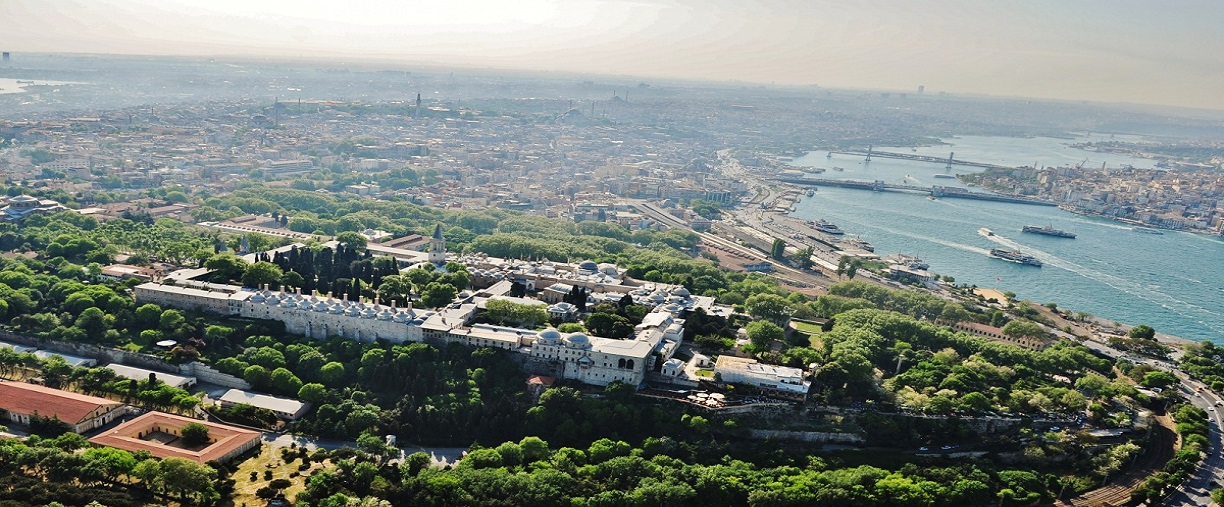TOPKAPI PALACE
The palace complex consists of four main courtyards and many smaller buildings. At its peak, the palace was home to as many as 4,000 people, and covered a large area with a long shoreline. It contained mosques, a hospital, bakeries, and a mint. Construction began in 1459, ordered by Sultan Mehmed II, the conqueror of Byzantine Constantinople. It was originally called the New Palace (Yeni Saray) to distinguish it from the previous residence. It received the name “Topkapı” (Cannon Gate) in the 19th century, after a (now lost) gate and shore pavilion. The complex was expanded over the centuries, with major renovations after the 1509 earthquake and the 1665 fire.
After the 17th century, the Topkapı Palace gradually lost its importance as the sultans preferred to spend more time in their new palaces along the Bosphorus. In 1856, Sultan Abdül Mecid I decided to move the court to the newly built Dolmabahçe Palace, the first European-style palace in the city. Some functions, such as the imperial treasury, the library, and the mint, were retained in the Topkapı Palace.
Following the end of the Ottoman Empire in 1923, Topkapı Palace was transformed by a government decree dated April 3, 1924, into a museum of the imperial era. The Topkapı Palace Museum is administered by the Ministry of Culture and Tourism. The palace complex has hundreds of rooms and chambers, but only the most important are accessible to the public today. The complex is guarded by officials of the ministry as well as armed guards of the Turkish military. The palace includes many fine examples of Ottoman architecture. It contains large collections of porcelain, robes, weapons, shields, armor, Ottoman miniatures, Islamic calligraphic manuscripts and murals, as well as a display of Ottoman treasures and jewelry.


